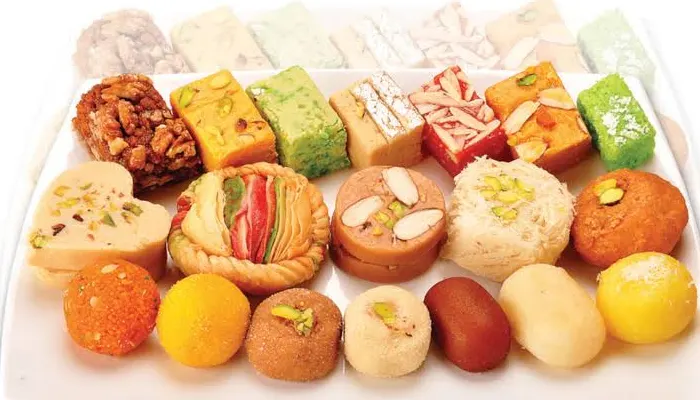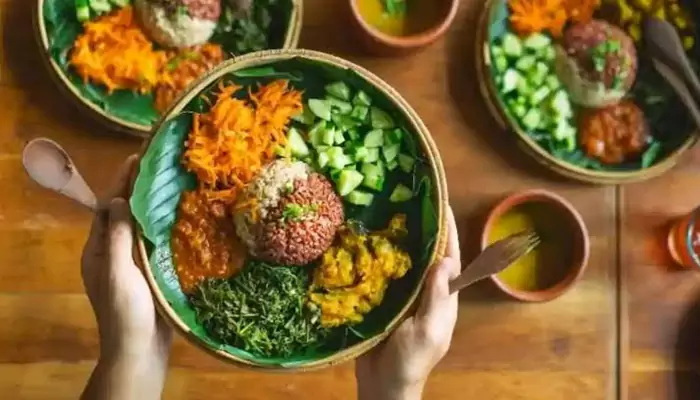Sabzi of the Day - Classic Curry Combos: From Potato to Pumpkin
- Sayan Paul
- 1 year ago
- 6 minutes read

From North to South, and East to West, Indian cuisine is incomplete without its varieties of delicious curries.
The diversity of India, as a country, can be seen in its cuisine as well. Whether it's the cooking methods, the use of spices, or food habits in general, there are countless dissimilarities that you will find while traveling from one place to another. Having said that, there are also some similarities that unite all together. Well, love for curries is inarguably one of them. From North to South, and East to West, curries (particularly veg) are a staple in our culinary scene. And the best thing is that many different vegetables can be combined together to make it special every time.

Today, let's explore some classic curry combos that you can try at home.
Aloo Gobi
Aloo Gobi is a widely popular dish in North India, which combines two prominent vegetables - potatoes (yes, they are botanically vegetables) and cauliflower. It's a versatile dish and can be paired amazingly with both rice and roti.
To prepare aloo gobi, you need 2 medium-sized potatoes, 1 cauliflower, 1/2 cup chopped onions, 1/2 cup chopped tomatoes, 1 ginger, 2 garlic cloves, 2 teaspoons of cooking oil, 1 teaspoon turmeric powder, 1 teaspoon red chili powder, 1 teaspoon coriander powder, 1 teaspoon garam masala, 3-4 green chilies, and 1/2 teaspoon salt.
Recipe: First, rinse the potatoes, peel, and cut them into small pieces. Also, wash the cauliflower and cut it into small florets. Then, parboil both in salt water together.
Heat the oil in a saucepan over medium flame.
Add salt, turmeric powder, chili powder, and coriander powder, and mix everything.
Add the cumin seeds and let them crackle for a few seconds.
Now, add grated ginger, minced garlic, and green chilies, and mix.
After sauteing it for about 2 minutes, add the chopped onions and tomatoes, and cook until they turn golden brown.
Add the potatoes and cauliflower, and cook on low heat until these mix well with the spices.
Add a little amount of water, cover the pan, and let it cook for 10 minutes (until the vegetables turn tender).
Make sure to stir every 3-4 minutes and add some water to avoid sticking or burning.
Once done, sprinkle garam masala, mix, and serve it hot alongside rice or roti.

Health Benefits: If consumed regularly, aloo gobi may help aid in digestion, boost immunity, support heart health, and regulate blood sugar levels among others.
Sambar
Yeah, we don't usually consider sambar as a curry. But think, and you will realize that the South Indian delicacy has all the features to be called a curry. And prepared with a combination of vegetables, it does deserve a spot on our list.
To prepare spicy and authentic sambar, you need 1 cup pea lentils, 1/2 cup carrots, 1/2 cup pumpkin, 1 medium-sized onion, 1 medium-sized tomato, 1 teaspoon of tamarind, 1 teaspoon of turmeric powder, 1 teaspoon mustard seeds, 1 teaspoon cumin seeds, 2 red chilis, 7-8 curry leaves, 2 teaspoons of sambar powder, 2 teaspoons ghee, salt, and water.

Recipe: First, rinse the pea lentils, and soak them in water. Let it stay at room temperature for a few hours. Thereafter, pressure cook it (adding a pinch of turmeric powder) until soft and mushy.
Once done, take the lentils out, put them in a bowl, and mash well.
On the other hand, soak the tamarind in a cup of warm water for 10 minutes. Squeeze out the juice and set it aside.
Now, boil all the vegetables - carrots, pumpkin, tomatoes, onions, etc. - until they are soft (but not entirely).
Mix the mashed lentils with the vegetables, and salt, turmeric powder, sambar powder, and tamarind water. Cook the whole mixture for about 10 minutes on low heat.
Meanwhile, in a saucepan, heat the oil over medium flame, and add mustard seeds, cumin seeds, and dry chilies. Let them crackle for a few seconds, and then pour it over the boiling mixture.
Once your sambar is prepared, garnish it with curry leaves and serve hot alongside idly/dosa/rice.

Health Benefits: Sambar is exceptionally rich in proteins, fiber, iron, and folate among other nutrients. First of all, it's an excellent dish for those on a weight loss journey. Besides, it also helps aid in digestion, boost immunity, regulate blood sugar levels, and enhance bone health.
Pumpkin & chickpea curry
Pumpkin and chickpea curry is relished not just in India, but also in the Middle East and several African countries. It's a cozy dish that's easy to prepare and is packed with a variety of essential nutrients.
To prepare the dish, you need 1 cup of cubed pumpkin, 2 cups of chickpeas, 1/2 cup of chopped onions, 1 ginger, 3 garlic cloves, 1/2 cup of chopped tomatoes, 3-4 green chilies, 1 cup coconut milk, 1 teaspoon turmeric powder, 1 teaspoon salt, 1 teaspoon garam masala, 1 teaspoon cumin powder, 1 teaspoon coriander powder, and 1/2 cup chopped coriander leaves.

Recipe: First, heat the oil in a saucepan over medium flame. Add salt, turmeric, powder, cumin powder, and coriander powder, and cook it for about 30 seconds.
Add the chopped onions and saute until they turn golden brown. Once done, add the chopped tomatoes as well, and saute again for 2 minutes.
Now, add the cubed pumpkin and cook it until it mixes well with the masala.
Add some water, mix, cover the pan, and let it simmer for 10 minutes.
Once the pumpkin turns soft, add the chickpeas and coconut milk, along with salt (as required). Mix everything together and cook for another 15 minutes.
Stir occasionally as required, and feel free to add water or salt.
Once done, sprinkle some garam masala and serve it hot alongside rice or roti.
#food
— Ulane V. (@UlaneVuorio) October 20, 2021
Pumpkin & Chickpea Curry
Instead of rice, eating with buckwheat😋#Foodie pic.twitter.com/1TylcQO1pK
(Credit: Ulane V.)
Health Benefits: Pumpkin and chickpea curry is a wholesome dish that may help improve your health in various ways. If consumed regularly, it may boost immunity, promote digestion, enhance heart health, and aid in weight management.
So, go as creative as you can and make your meals unforgettable. Besides the above-mentioned curry combos, you can also go for Gajar Methi, Bengali-styled Chochchori, Lauki-Tamatar Sabzi, etc.











